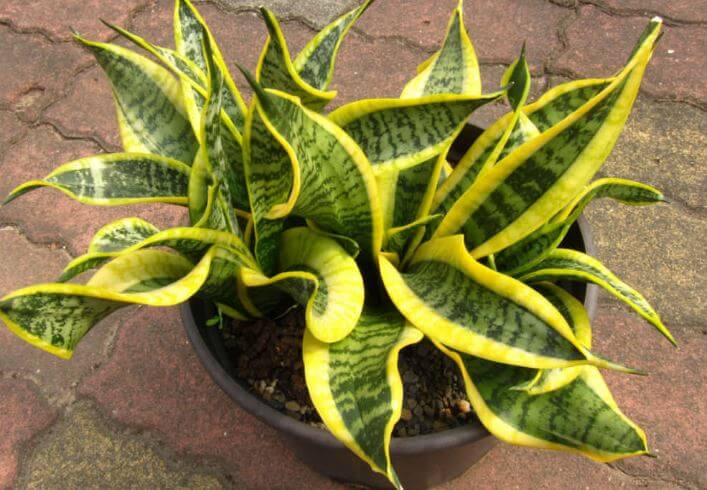Last Updated on January 6, 2023 by a Friendly Gardener
With curling leaves that give it a distinctive shape, the twisted sister plant is often passed over for its more popular cousin, the common mother-in-law’s tongue, but has just as much character and grace as the latter.
This unusual-looking plant gets its name from its twisted, knotted leaves and trunks that lend it a highly exotic look and make it quite a conversation-starter houseplant!
If you’re bringing home this ornamental plant, here’s everything you need to know about the twisted sister plant and caring for it!
About the Plant
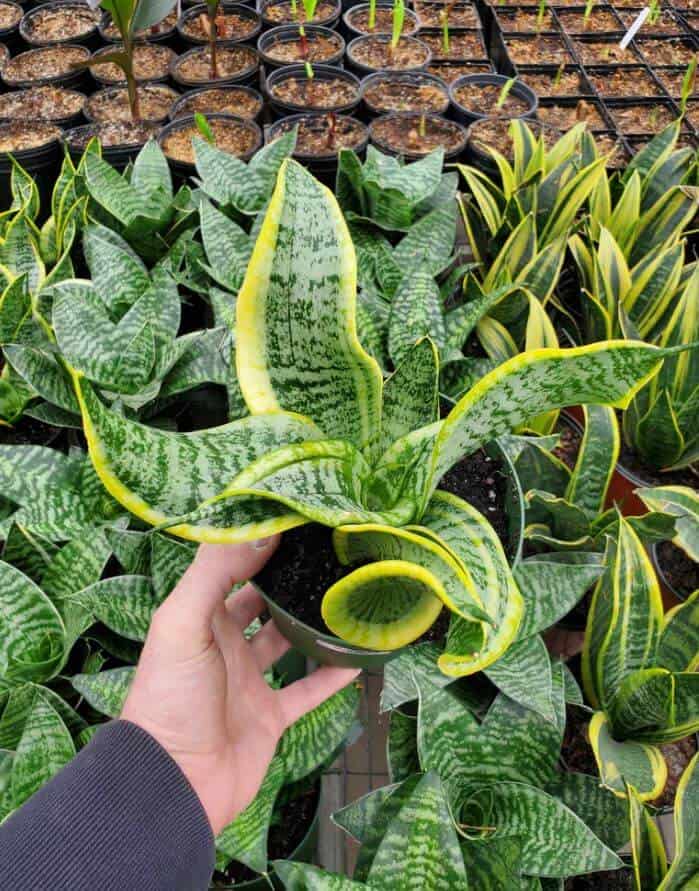
The Sansevieria trifasciata “twisted sister” or “twist”, unlike the common snake plant, which has straight-growing erect leaves, has a unique growth pattern, with leaves growing at an angle. This gives the whole plant a twisted look, similar to the bird’s nest fern, earning the plant its name.
However, the coloration and shape of the twisted sister plant’s leaves are just as gorgeous as the snake plant, with splendid green and silver/lime green/golden yellow spots, stripes, and variegations on dramatic dark green leaves.
Commonly used as ornamental plants, twisted sister plants have one more feature that differentiates them from the common snake plant—they can slip in and out of growth and hibernation at any time of the year, unlike their cousins who follow a cycle of growth in spring and dormancy in winter.
Additionally, twisted sister plants are a dwarf variety, with mature plants reaching a maximum height of only 12 to 15 inches.
Popular both indoors and outdoors, twisted sister plants are a gorgeous pop of color, instantly transforming any drab spot into a vibrant one.
At a Glance
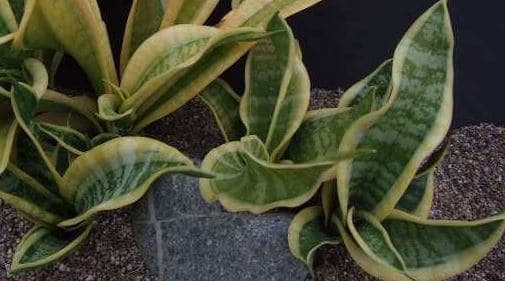
- Botanical Name: Dracaena trifasciata “Twisted Sister”/Sansevieria trifasciata “Twisted Sister”
- Common Names: Gold twist Sansevieria, twisted sister snake plant, snake plant twisted sister
- Family: Asparagaceae
- Native Regions: Madagascar and Southern Africa
- Type of Plant: Slow-growing perennial flowering plant
- USDA Hardiness Zones: 10b to 11b
Twisted Sister Plant Care
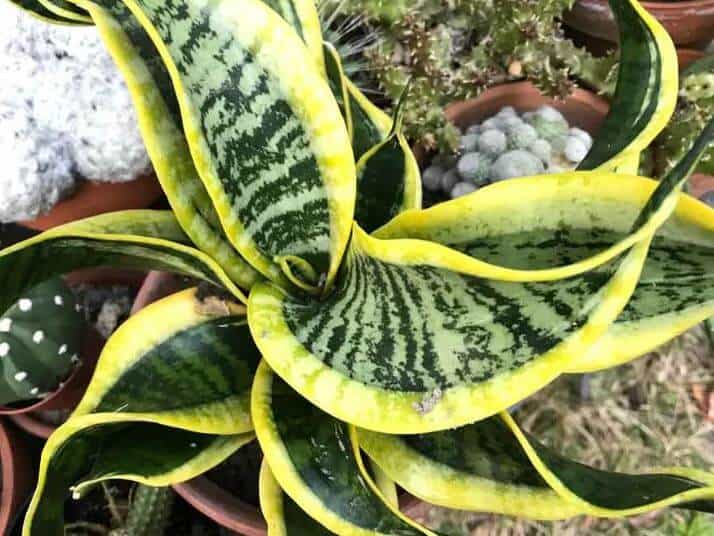
Just like the mother-in-law’s tongue, the twisted sister plant likes bright environments, which help retain the vibrant leaf colors, and occasional watering. Here’s the low down on twisted sister plant care.
Light
The twisted sister plant is a versatile one that grows equally well in sunshine and dimness. Usually, the plant requires adequate direct sunlight or filtered, bright light to grow well and retain its colors.
When grown indoors, north-facing windows or south-facing windows with curtains for filtering the light are both excellent options. When grown outdoors, a partially shaded spot works best, as too much direct sunlight can scorch the leaves or bleach them.
If you put the plant in a dim corner, it’s still going to survive, but it’s likely to lose its colors.
Additionally, twisted sister plants despise the cold, so if you live somewhere that experiences frost and cold, it’s better to grow the plant indoors or move it indoors during the cold months.
Soil
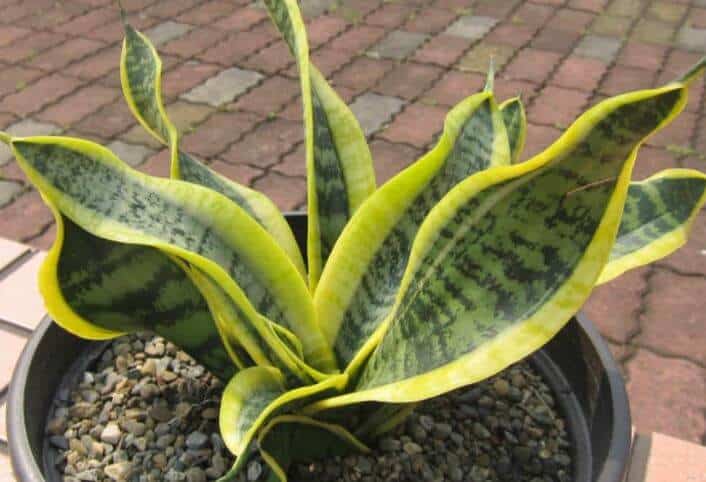
Twisted sister plants need well-drained, healthy soil with high levels of organic matter to realize their full growth potential. These plants are highly sensitive to root rot, so care has to be taken to prevent overwatering and ensure adequate water drainage in the soil.
Materials such as vermiculite and perlite can enhance the draining capabilities of the soil. In fact, making the perfect soil for your twisted sister plant is as simple as adding a scoop of perlite to a standard, store-bought potting mix.
Water
Though twisted sister plants require regular watering during their growing season (spring and summer), they only need to be watered until the soil moistens; the soil shouldn’t be soggy or soaked. Allow the top layer of soil to dry a little before you water the plant again.
In the colder months, cut back on the watering; even once or twice a month may be sufficient in these months since the plant is dormant.
Humidity
Twisted sister plants do just fine in dry conditions or humidity between 40% and 60% (which is the average level of indoor humidity in houses). Excess humidity will encourage water to remain on the leaf surface, which, in turn, can lead to harmful fungal growth and pests.
If the indoor humidity in your house doesn’t reach at least 40%, supplement it with a humidifier or pebble trays.
Temperature
Twisted sister plants can withstand the occasional exposure to frost, but prolonged exposure may kill them. Otherwise, these plants thrive in temperatures above 70℉, with dry air and sufficiently moist soil.
A good sign of ideal conditions is your twisted sister’s lower leaves curling attractively while the upper leaves grow straight upwards.
Pruning
These are low-maintenance plants that do not require much pruning. If you feel like your plant needs good pruning, you can do so at any time of the year apart from the plant’s dormant period (late fall and winter).
If you’re choosing to prune during the active growing season, do so on warm days so that the plants resume their growth post-pruning.
Fertilizer
Twisted sister plants enjoy feeding on fertilizer in their growing season. You can use an all-purpose general fertilizer, diluted to half its strength, to feed the plant once in three weeks during the summer. This will encourage the foliage and flowers to grow well.
Don’t fertilize in the fall months, as this is when your plant slows its growth and prepares for the oncoming cold. Stop fertilizing at least a month before the first frost is scheduled to hit.
Propagation
Twisted sister plants are easy to propagate via cuttings. Take a cutting or a leaf from a healthy plant during the growing season and place it in a potting soil mix. After two weeks, with the use of rooting hormone, you should see root growth.
Repotting
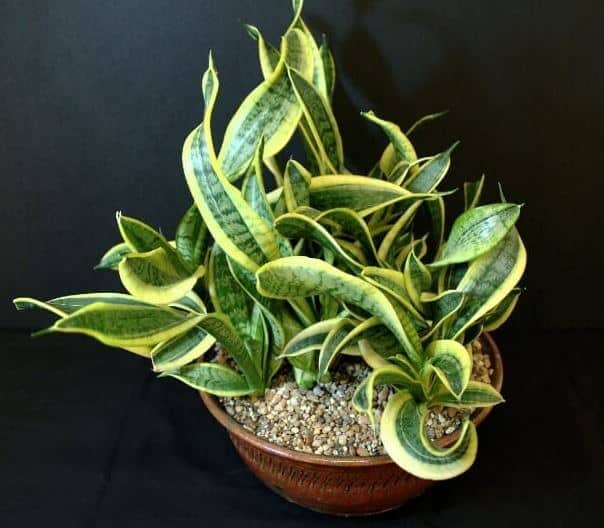
Repotting should be done only in spring and only when your plant requires it. Since twisted sister plants are slow growers, repotting may be necessary only once in two years. Make sure the new pot has enough drainage holes and that the soil has adequate drainage capabilities.
The Bottom Line
Twisted sister plants are great additions to any garden, with their weird elegance and beauty. They’re also pretty resilient to pests and can adapt to a range of living conditions, making them excellent starter plants.
If you’re thinking of buying yourself one of these low-maintenance, ridiculously gorgeous plants, go right ahead!

